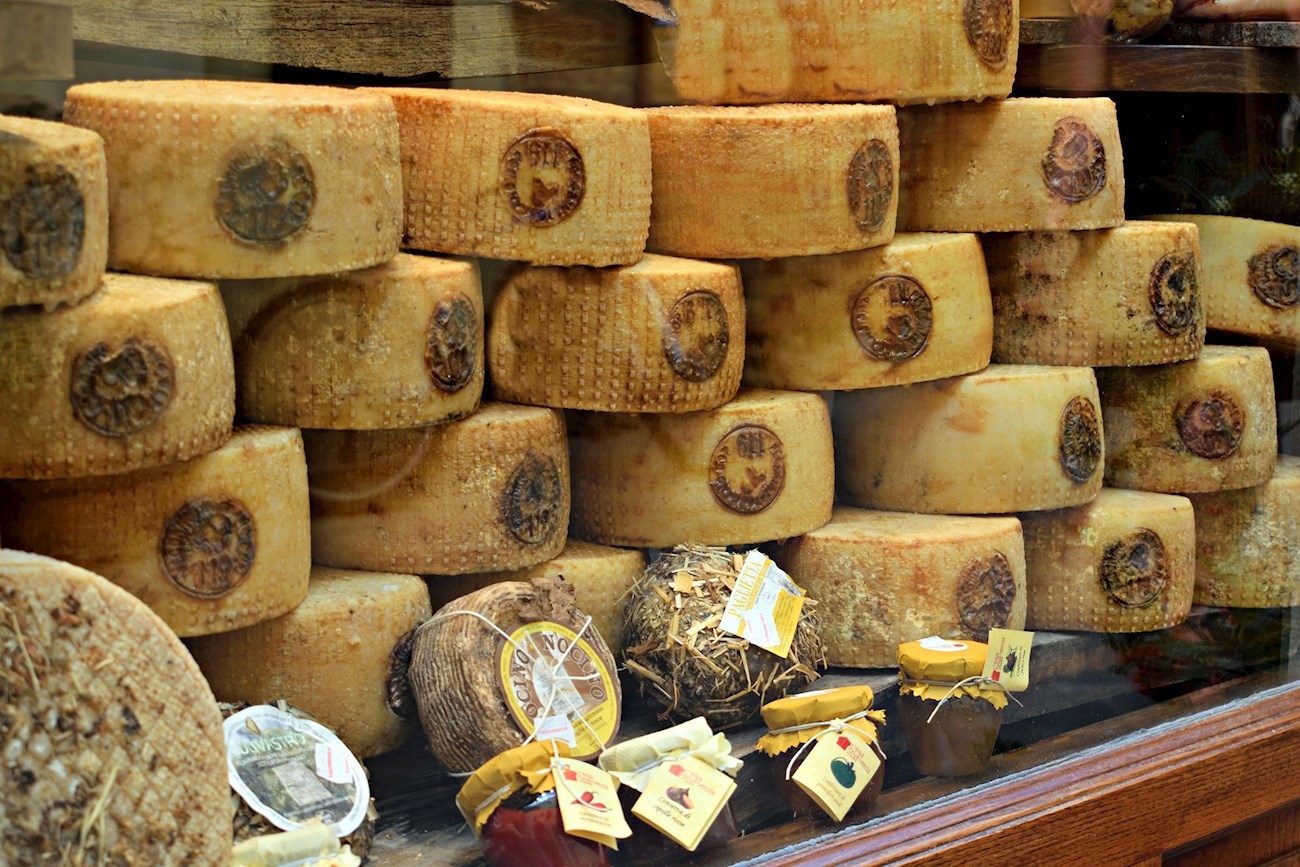TABLE OF CONTENTS
Best Tuscan Raw Milk Cheese Types
Back in the 15th century, when Pecorino production used to begin in spring, this Tuscan delicacy was called Cacio Marzolino, meaning March cheese. Nowadays, Pecorino Toscano is also produced in Lazio and Umbria, Tuscany's neighboring regions, and available year-round as either Fresco (fresh) or Stagionato (matured for at least 4 months).
This soft to semi-hard cheese is made with whole milk from sheep feasting on pastures nestled between the Apennines and the Tyrrhenian Sea. Compared to other varieties of Pecorino cheese, Toscano is only briefly salted and thus retains its delicate, sweet flavor.
Pecorino di Pienza is a traditional variety of Pecorino produced in Pienza in the province of Siena. The cheese is made from sheep's milk and comes in a few versions – some are young, some covered in straw, some rubbed with ash, and some are pressed with tomatoes.
The young version is semi-ripened and colored with tomato juice on the rind, while the aged version has a black rind. The cheese is not spicy as other Pecorino types because veal rennet is used instead of kid goat rennet. Pecorino di Pienta is aged for 30 days, when it's still fresh and soft, ideal for melting of grilling, while the other versions are aged from 2 to 5 months.
Pair with
Produced in the province of Pisa, Tuscany since the 1400s, Pecorino delle Balze Volterrane or Pecorino Pisano is a fat, semi-hard cheese made with raw milk from the Italian Sarda sheep breed. It is available in four varieties: Fresco (matured for 4-7 days), Semistagionato (aged between 45 days and 6 months), Stagionato (matured for 6-12 months) and Pecorino da Asserbo, aged for over a year.
The unique geomorphology of the designated area of production, with numerous gullies and large ravines carved out by heavy rain, contributes to the selection of specific flora dominated by widely spread cardoon, the basic ingredient of the vegetable rennet which gives Pecorino Pisano its pronounced herbal aroma.
La Castana is an award-winning Italian blue cheese originating from Tuscany, where it's produced by De' Magi Formaggi. The cheese is made from raw cow's milk, salt, rennet, Penicillium roqueforti, lactic acid bacteria, candied chestnuts, rum, cocoa, sugar, and glucose syrup.
This unusual cheese is sold wrapped in aluminized paper, and the whole top of the rindless cheese is adorned with candied chestnuts, hence the name. The cheese is left to age in a mixture of water, rum, and cocoa, which is the reason why it takes a brown color.
TasteAtlas food rankings are based on the ratings of the TasteAtlas audience, with a series of mechanisms that recognize real users and that ignore bot, nationalist or local patriotic ratings, and give additional value to the ratings of users that the system recognizes as knowledgeable. TasteAtlas Rankings should not be seen as the final global conclusion about food. Their purpose is to promote excellent local foods, instill pride in traditional dishes, and arouse curiosity about dishes you haven’t tried.



